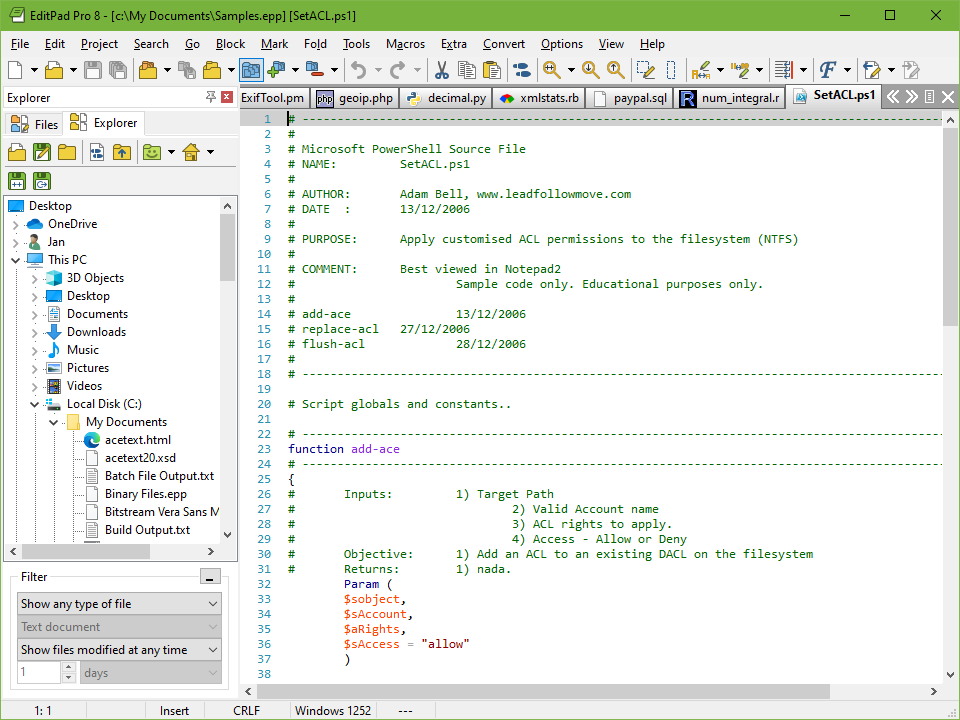In Windows Shell programming, the Windows Shell namespace The place promised in our early days english sub torrent. is an organized tree-structured hierarchical representation that Windows Explorer facilitates to graphically present file system contents and other objects to the end user. Conceptually, the Shell namespace may be regarded as a larger and more inclusive version of the file system.
- Windows Shell Script Editor
- Windows Shell Download
- Windows Shell Editor Download
- Windows 10 Shell Editor
I'm trying to figure out the easiest way to edit text files in the console (PowerShell in my case). I'm using Windows 7 64 bit. It galls me that I can't just type edit filename.txt to edit a file. That used to work, but that's all changed. I am looking for software similar to nano for linux bash but for windows powershell. Is there any built in so I do not have to install something? EDIT Nano is a text editor that runs within the bash. You can open a text like document (.txt,.c etc) in the bash to edit it on the fly or just view it and close it again. I had to do some debugging on a Windows Nano docker image and needed to edit the content of a file, who would have guessed it was so difficult. I used a combination of Get-Content and Set-Content and base 64 encoding/decoding to update files. Editing foo.txt. PS C:app Set-Content foo.txt 'Hello World' PS C:app Get-Content foo.txt Hello World PS C:app System.Text.Encoding. The next method we are going to use is Powershell cmdlets. We will use cmdlets in Powershell and edit a text file. So, open up your Powershell window. Use this command to see all the files in the current folder: Get-ChildItem. Screenshot: Now, you choose the file to edit. There are basically two commands that you can use to edit a file.
The Shell namespace is a hierarchical tree that consists of the wide variety of objects that make up the system.
Types of objects[edit]
Specifically, the Shell namespace consists of two basic types of objects, namely files and folders. Folder objects, which are containers for file objects and other folders called subdirectories, are the nodes of the tree, while file objects are the leaves of the namespace tree. Objects in the Shell namespace can represent physically stored file system objects such as files and folders, or can be virtual objects such as the My Network Places and Recycle Bin 'virtual folders'.
Windows Shell Script Editor
The folders and data files that reside on physical computer disk drives are the most numerous and familiar of these objects; although, through extensions the Shell also provides access to various virtual objects that may not involve physical storage at all. Consequentially, there are folders that do not reside on the physical file system, which are referred to as virtual folders. Likewise, there are virtual file objects that do not reside on the physical file system. Virtual Shell objects are used throughout the Windows Shell. On the Desktop, Shell launchers are implemented through a built-in shell extension. The Window Shell utilizes virtual Shell objects to conceptually represent computer peripherals and network devices, such as printers and routers. Autodesk mac requirements. Virtual Shell objects can function as Shell links and execute commands when invoked by the user. For example, in Windows XP and other versions, 'rundll32.exe' shell32.dll,Options_RunDLL 0 Get adobe reader 8. is executed on the command line when a user launches the 'Folder Options' applet in the Control Panel.
The user's Desktop is a special folder that resides at the root of the Shell namespace. Although this folder maps by default to a physical folder stored in the user's profile folder, the special desktop folder is represented as a distinct object from the physical desktop folder. The same holds true with the 'My Documents' (Windows 95 through XP) or user 'Documents' (Windows Vista+) folder.
See also[edit]
Windows Shell Download
External links[edit]

Windows Shell Editor Download
- Windows Shell programmer's guide at the MSDN Library
- Introduction to the Shell Namespace of the Shell Developer's Guide at the MSDN Library
- Windows Shell functions at codebot

